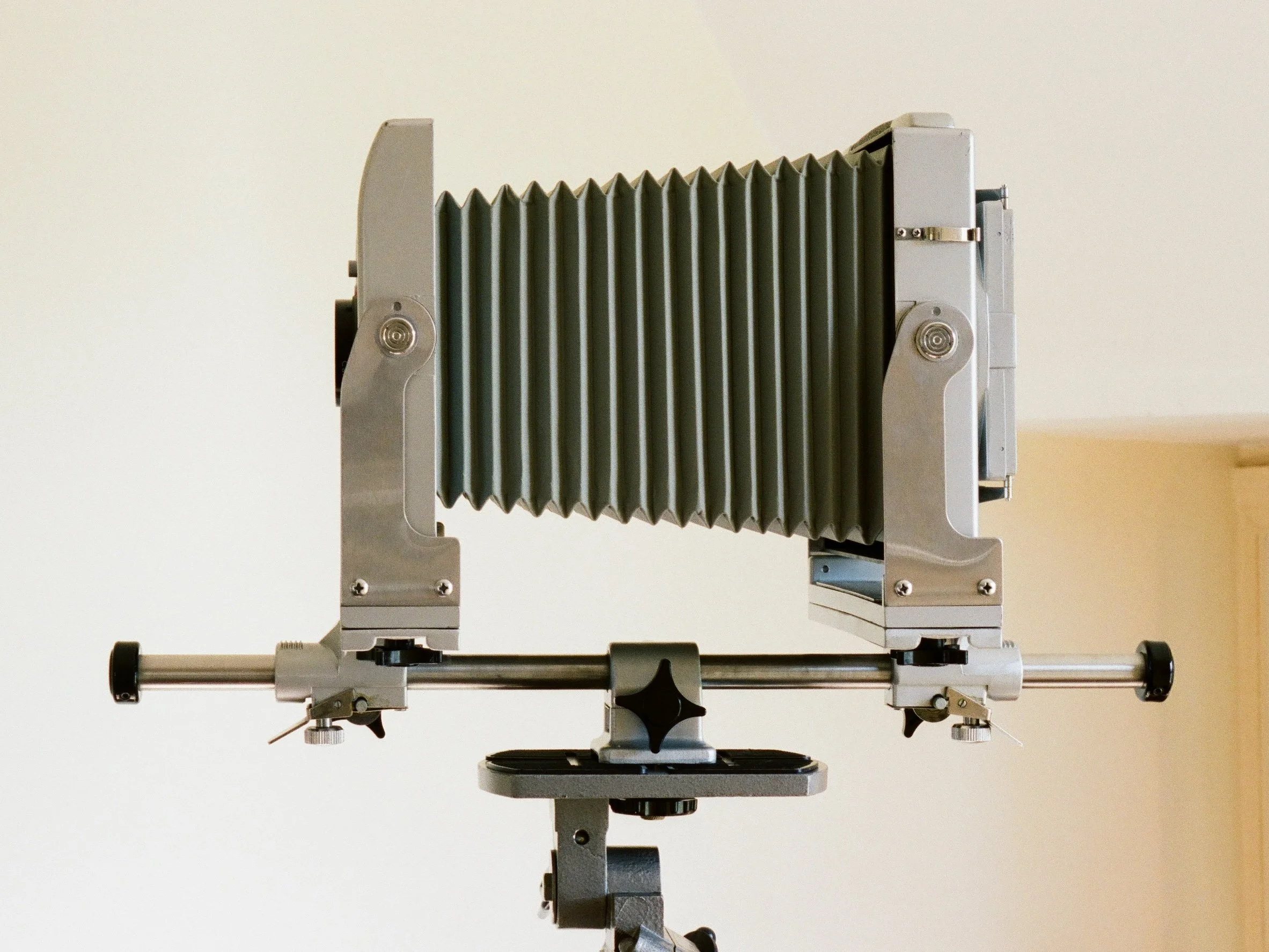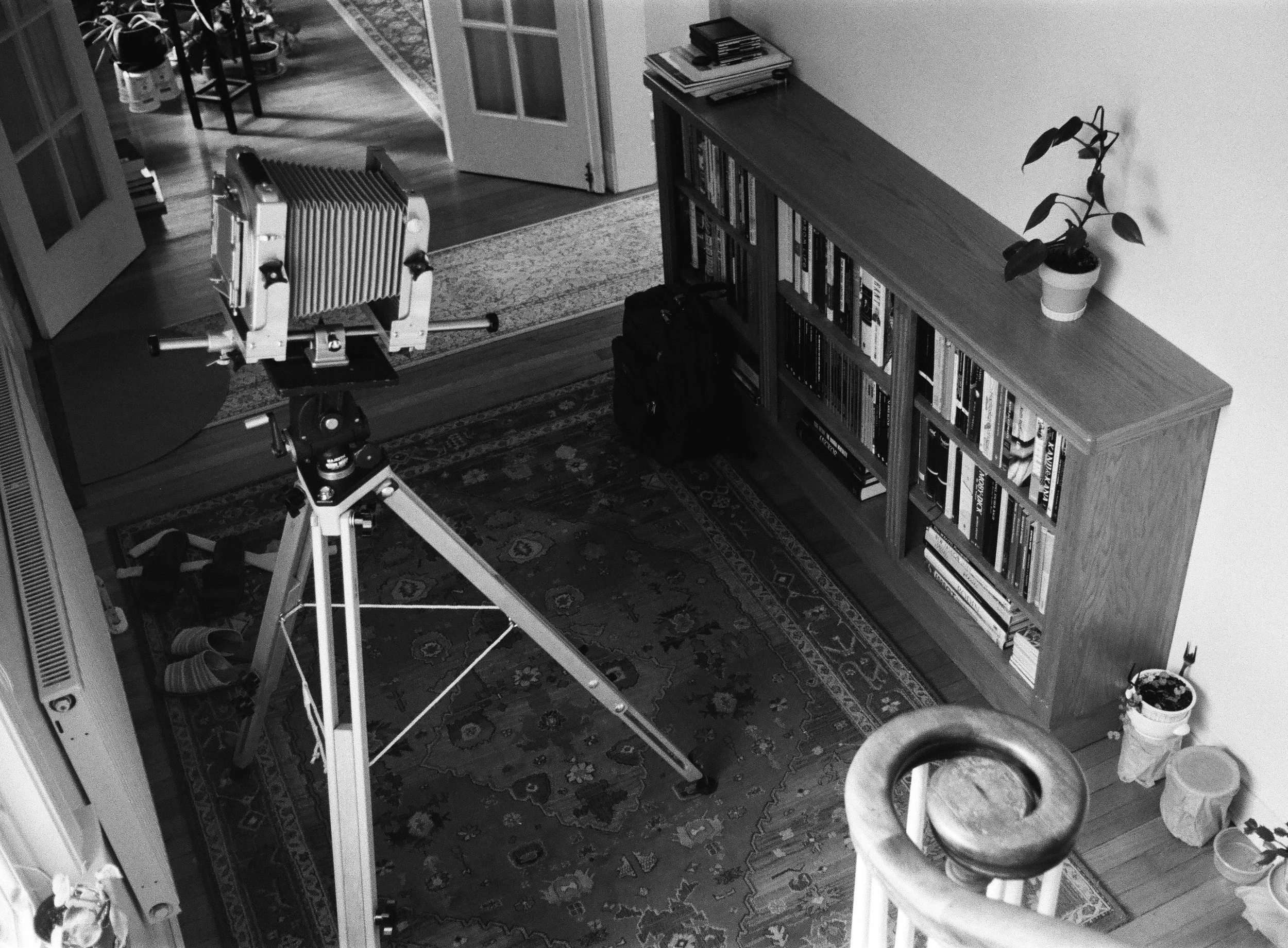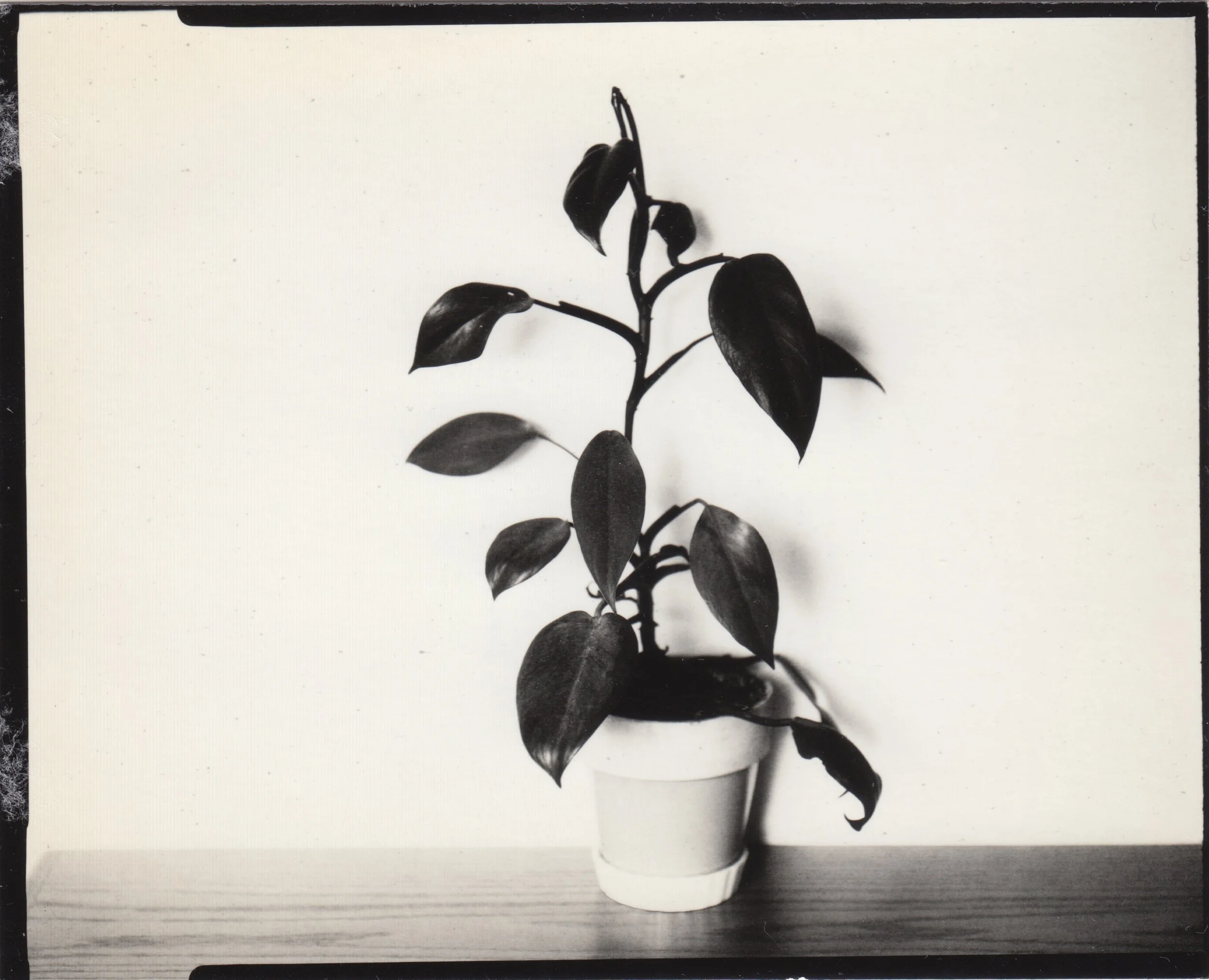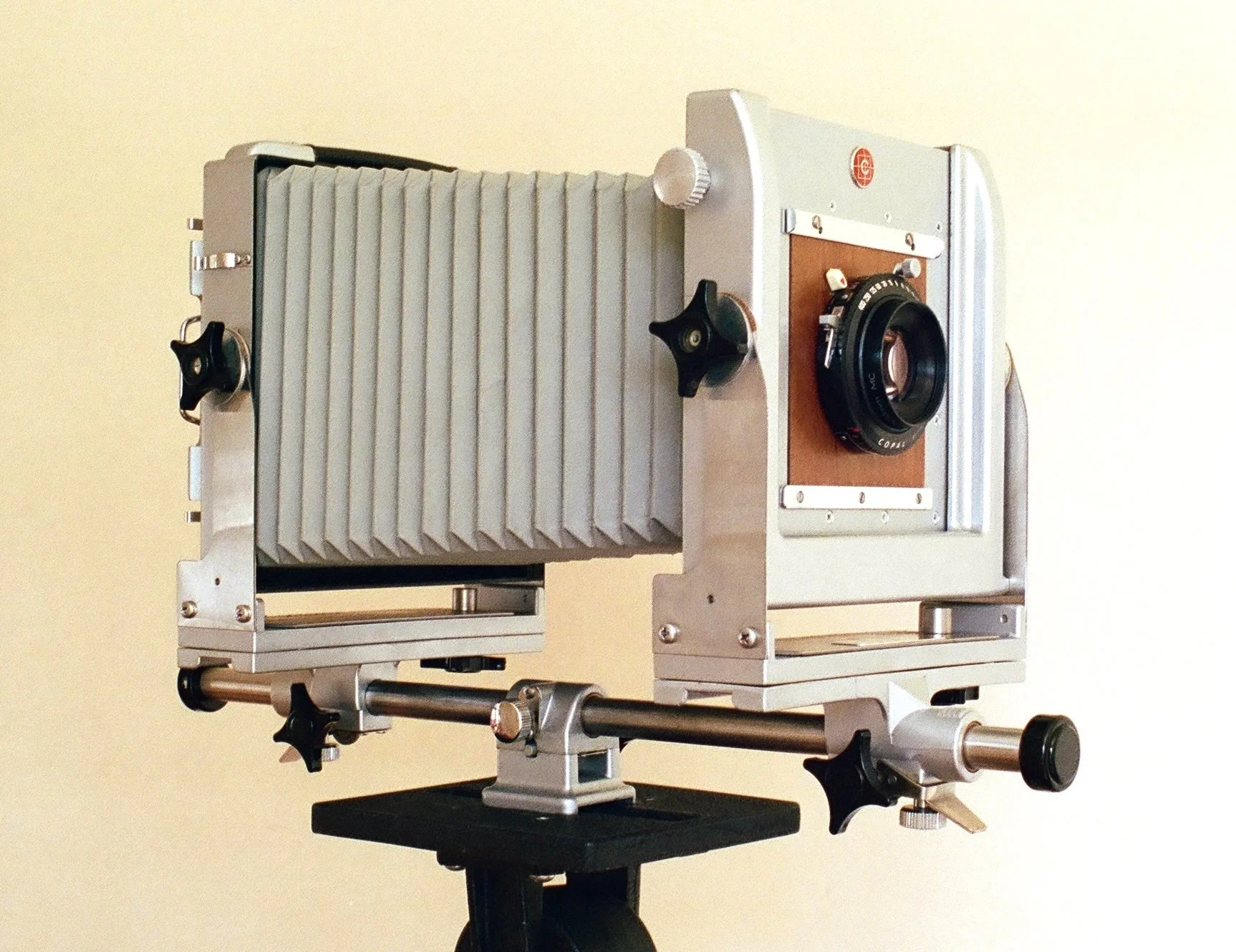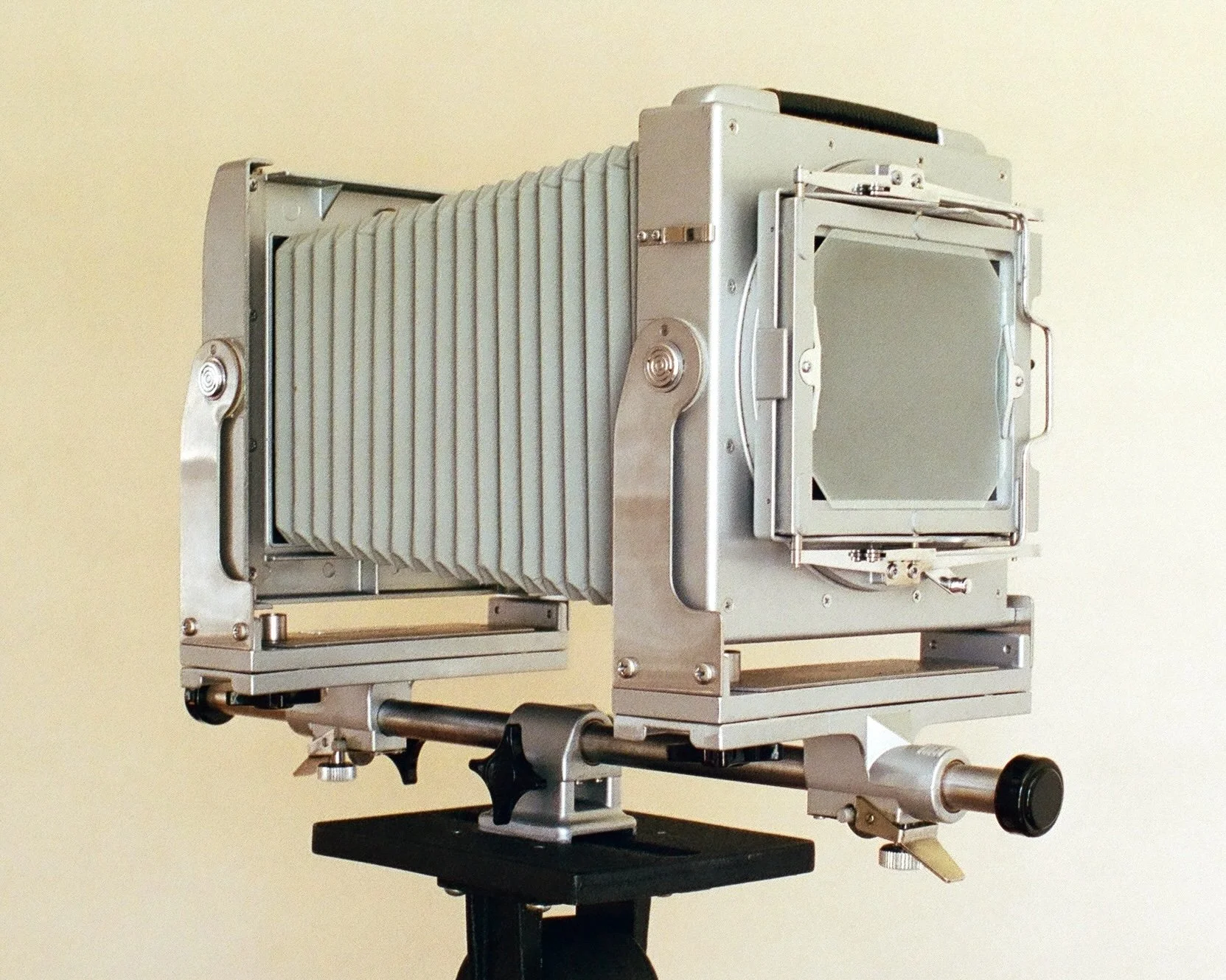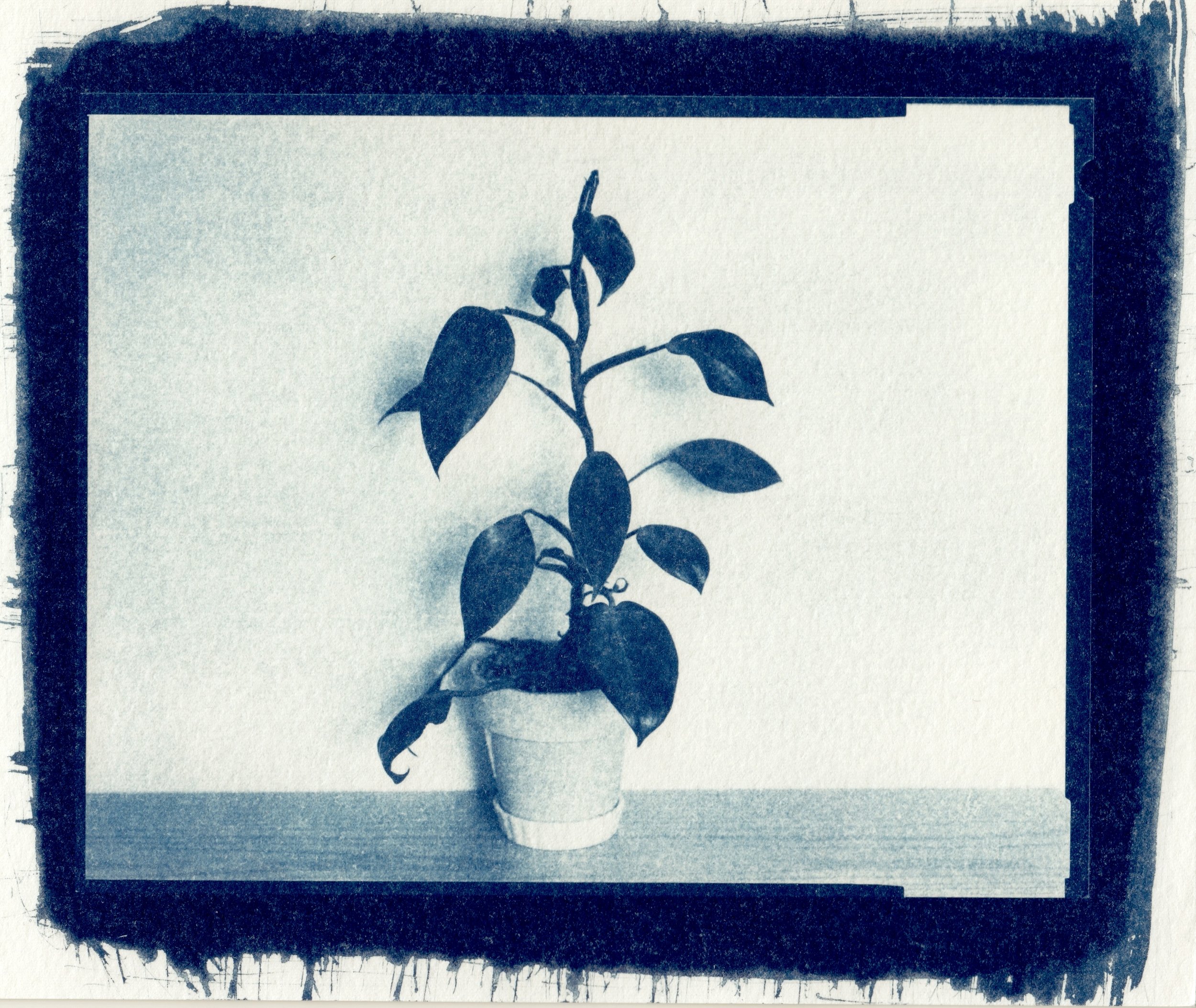4x5 Calumet CC-400
A Chicago-made monorail, designed with some style.
4x5 Calumet CC-400 on a Gitzo R. No. 4 tripod head. (Color photos of the camera were made with a Nikon F, 55mm f/3.5 Micro-Nikkor-P.C, and Portra 400.)
A standard 4x5 camera in the U.S. market
The 4x5 Calumet CC-400 was in production in Chicago in the 1960s and 70s and was popular in that era. Ansel Adams used one to make two of the photographs in the 1970 edition of his book Camera and Lens. The camera itself appears in numerous photos in that book; Adams used it to illustrate the capabilities of large format cameras.
4x5 Calumet setup for the plant photos below. The camera is on a Zone VI tripod with a Majestic head. (Photo taken with a Nikon F, 35mm f/2.8 Nikkor-S, Tri-X, 2024.)
Bloody Mary Philodendron. 4x5 Calumet CC-400, 210mm f/6.8 Caltar-HR, Harman Direct Positive paper, 2024.
4x5 Calumet CC-400 on a Majestic tripod head. The lens board is not original to the camera, it’s from a 4x5 Korona View.
4x5 Calumet CC-400 on a Majestic tripod head.
Design
The 4x5 Calumet has more attention to style than most monorails. The finish is not mainly plain black as is the norm. There are shiny chrome parts and some sculptural form. This is a selling point in the company’s Spring 1970 catalog:
‘The Calumet looks modern; important when appearance counts with a customer’.
Functional design elements include:
Non-modular design. The rail, bellows, and back are fixed (non-removable). Models were available sharing the same front and rear standards, with shorter and longer bellows and rails.
Revolving back.
A bail lever to lift the ground glass frame, facilitating film holder insertion and removal.
Complete movements except for rear rise. Front rise is geared. Axis tilts.
Coarse and fine focus adjustments front and rear.
Geared adjustment of the position of the camera on the rail, after it is fastened to the tripod. An unusual and useful feature.
Nearly all metal construction. The only non-metal parts are the star-shaped knobs, the black monorail caps, the strap, and I use a non-original wooden lens board.
A comparison of design features of three monorails (Sinar F, Super Cambo, Calumet) is on the Sinar F page.
Bloody Mary Philodendron. Negative: 4x5 Calumet CC-400, 210mm f/6.8 Caltar-HR, Arista-Edu 400 film. Print: Cyanotype from original camera negative. Both 2024.
References / further reading
Camera manual: orphancameras.com https://www.cameramanuals.org/prof_pdf/calumet_4x5.pdf accessed Aug. 27, 2025.
More references:
Adams, Ansel. 1970, Camera and Lens: The Creative Approach. Dobbs Ferry, N.Y.: Morgan and Morgan.
The 4x5 Calumet camera is credited with the photographs Roots, Foster Gardens, Honolulu (p. 20) and Colton Hall, Monterey, California (p. 177).
Calumet Photographic, Inc. 1970 (Spring). Photographic Equipment for the Professional. Elk Grove Village, Illinois (source for the quote about the camera’s styling).
My camera is labeled ‘Calumet Manufacturing Company, Chicago, Illinois’, consistent with the company’s Jan. 1965 catalog. It seems the company moved to the suburbs sometime between 1965 and 1970.
Stroebel, L. 1993. View Camera Technique, 6th ed. Boston: Focal Press.
